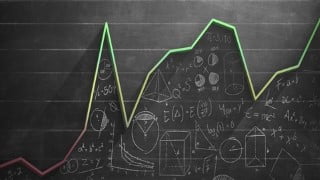Complete Introduction to Economics- Basic to Advanced Level
Learn the basics of economics and advance your knowledge with this comprehensive course. From demand and supply analysis to economic indicators, depreciation, and economic thoughts, this course covers it all. Perfect for students and professionals looking to enhance their understanding of economics.
What you’ll learn
- Basic Concepts of Economics
- Understanding Between Goods and Services
- Concepts, Laws, Functions and Shifting of Demand and Supply
- Equilibrium of Demand and Supply
- Elasticity, Representation and Find Price Elasticity of Demand with Examples
- Income Elasticity and Cost Elasticity
- Measurement of Financial Effectiveness, Time Value of Money, Present Value and Future Value with Examples
- Profitability Index(PI),Measurement, Interpreting and Application of (PI) with Examples
- Payback Period for Investments
- Internal Rate of Return and its Advantages and Disadvantages
- Economic Indicators
- Depreciation and Depletion and Comparing both of them in detail
- Economic Thoughts (Classical, Non Classical Thoughts and Keynesian Economists)
- Ten (10) Principles of Economics By Gregory Mankiw
- Understand Production Analysis in Detail
- Revenue, Profit and Cost Analysis with Examples
- Business and forms of Businesses (Sole Proprietorship, Partnership, Corporation, Franchising, Mergers, Joint Venture, Acquisition)
Show moreShow less
About this Course Economics | Basics to Advanced Level|
This course was recorded for university students for making them professionals in economics. As some of the students are not from the economics background so in this course we start from a very scratch level to clear their concepts. You can check out the preview lectures every topic is explained in very detail.
In this course, we start from very basic level concepts of economics to advanced level. The course is carefully designed and structured in the simplest way to give you an understanding of Basics to Advances Concepts of Economics, Demand and Supply Analysis, Elasticity Concepts in Economics, High-Level Concepts of Economics for Professionals, Depreciation Depletion, Economic Thoughts, Ten(10) Principles of Economics, Revenue, Profit and Cost Analysis, Businesses and Form of Businesses, Linear Programming In Economics
Course Content
Basic Concepts of Economics
Economics, Agents of Economics
D- Economic System, E-Slope in Economics, Slope in Economics, F Variables
Engineering Economics, Economics VS Engineering Economics, Goods and Services
Types of Goods, Types of Services, Terminology, and Symbols
Demand and Supply
Concepts of Demand And Quantity Demanded
Law of Demand, Functions of Demand, Shifting of Demand
Supply, Types of Supply Schedules and Curves, Factors Affecting Supply
Law of Supply, Increase or Decrease in Supply with Examples
Equilibrium of Demand and Supply, Effect of Shift in Supply Demand with Algebra
Goods in Economics
Elasticity
Elasticity, Representation and Find Price Elasticity of Demand with Example
Representation and Find Price Elasticity of Supply, Income Elasticity
Measurement of Income Elasticity and Cross Elasticity
Advanced Concepts of Economics
Measurement of Financial Effectiveness, Time Value of Money, Present Value
Future Value with Examples
Profitability Index(PI), Measurement of PI, Interpreting and Application of PI
Examples of Profitability Index
Payback Period, Significance of Payback Period, Examples of Payback Period
Net Present Value, Acceptance Rule of Net Present Value
Examples of Net Present Value (1-5)
Examples of Net Present Value (6-10)
Internal Rate of Return (IRR), Advantages and Disadvantages of IRR
Measurement of Financial Effectiveness, TYM
Environment and Economics, Engineering Economics Decisions
Economic Indicators
Depreciation and Depletion
Depreciation, Factors in Computing Depreciation (Characteristics, need, causes)
Depreciation Methods
Comparing Depreciation Methods, Depletion, Cost Determination and Depletion
Differences Between Depreciation and Depletion
Economic Thoughts
Economic Thoughts, Classical Thoughts
Non-Classical Thoughts, Keynesian Economists
The Principles of Economics By Gregory Mankiw
Ten(10) Principles of Economics
Production Analysis
Production, Types of Production
Factors of Production
How These Factors are Interconnected, Economics of Scale
Revenue, Profit and Cost (Cost Analysis)
Revenue, Profit, Cost,
Types of Costs
Cost Formulas
Return to scale, Practice Problems
Practice Problems
Businesses
Business, Forms of Businesses (Sole Proprietorship, Partnership
Forms of Businesses Continue (Corporation)
Forms of Businesses Continue (Franchising, Mergers)
Forms of Businesses Continue (Joint Venture)
Forms of Businesses Continue (Acquisition )
Linear Programming in Economics
BEFORE YOU ENROL:
1. Watch the Preview video
2. Watch the sample lectures
3. Thoroughly read this course description
4. Be fully aware that this course was recorded for University Students Only Enrol if you find this Course Helpful.
Economics is a complex subject filled with a maze of confusing terms and details which can be difficult to explain. Even economists have trouble defining exactly what economics means. Yet, there is no doubt that the economy and the things we learn through economics affect our everyday lives.
In short, economics is the study of how people and groups of people use their resources. Money certainly is one of those resources, but other things can play a role in economics as well. In an attempt to clarify all this, let’s take a look at the basics of economics and why you might consider studying this complex field.
The Field of Economics
Economics is divided into two general categories: microeconomics and macroeconomics. One looks at the individual markets while the other looks at an entire economy.
From there, we can narrow economics into a number of subfields of study. These include econometrics, economic development, agricultural economics, urban economics, and much more.
If you have an interest in how the world works and how financial markets or industry outlooks affect the economy, you might consider studying economics. It’s a fascinating field and has career potential in a number of disciplines, from finance to sales to the government.
Two Essential Concepts of Economics
Much of what we study in economics has to do with money and the markets. What are people willing to pay for something? Is one industry doing better than another? What is the economic future of the country or world? These are important questions economists examine and it comes with a few basic terms. You can find answers to all these questions from this course.
Who this course is for:
- IB students
- A Level and AP students
- You can be a student in high school or university, an entrepreneur, a lawyer, a banker or an engineer
- This course is designed for people who are not coming from economics background, or just started studying Economics or studied Economics but forgot most of it
- Anyone wanting to progress from Beginner to Advanced in Economics







